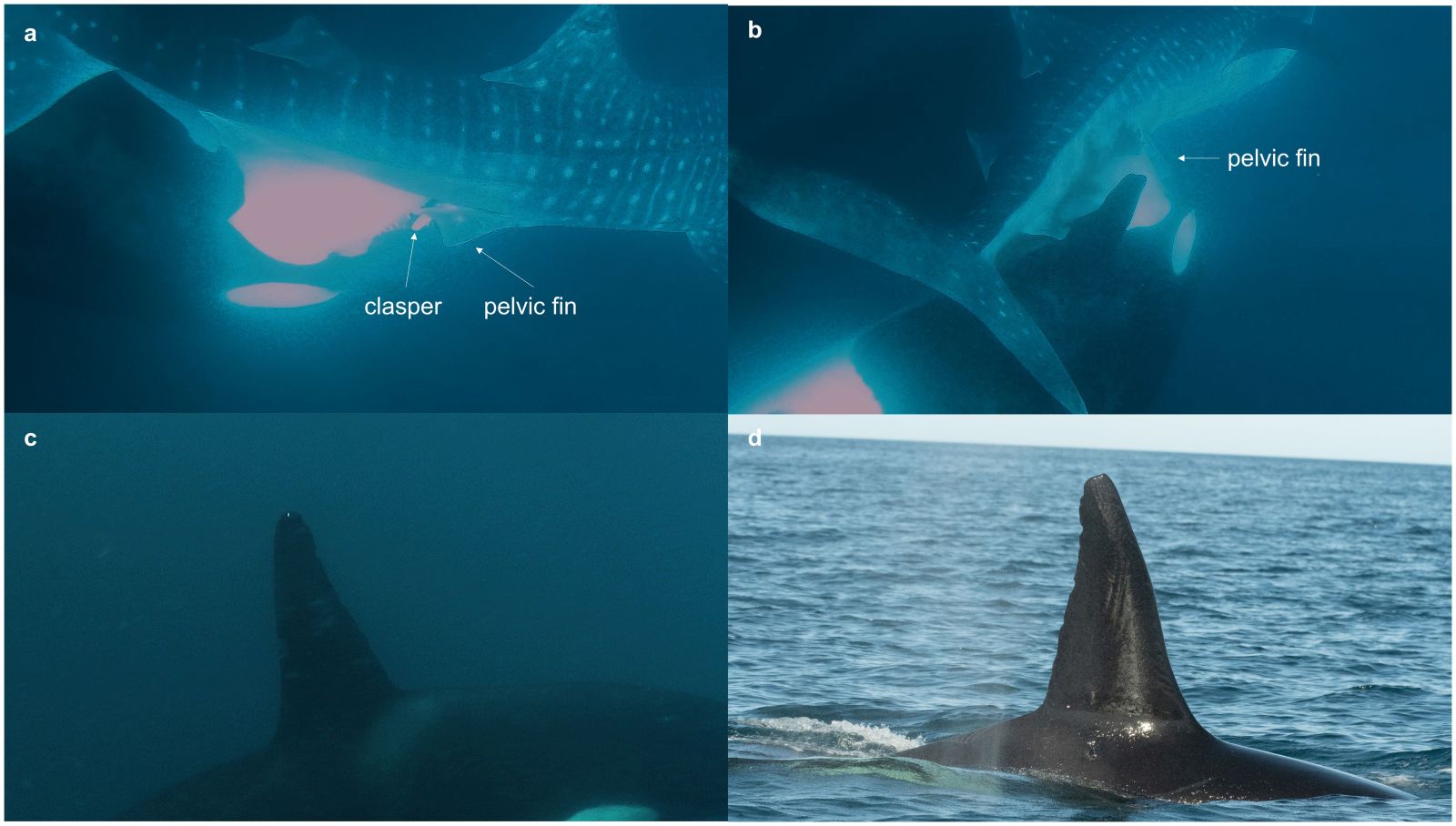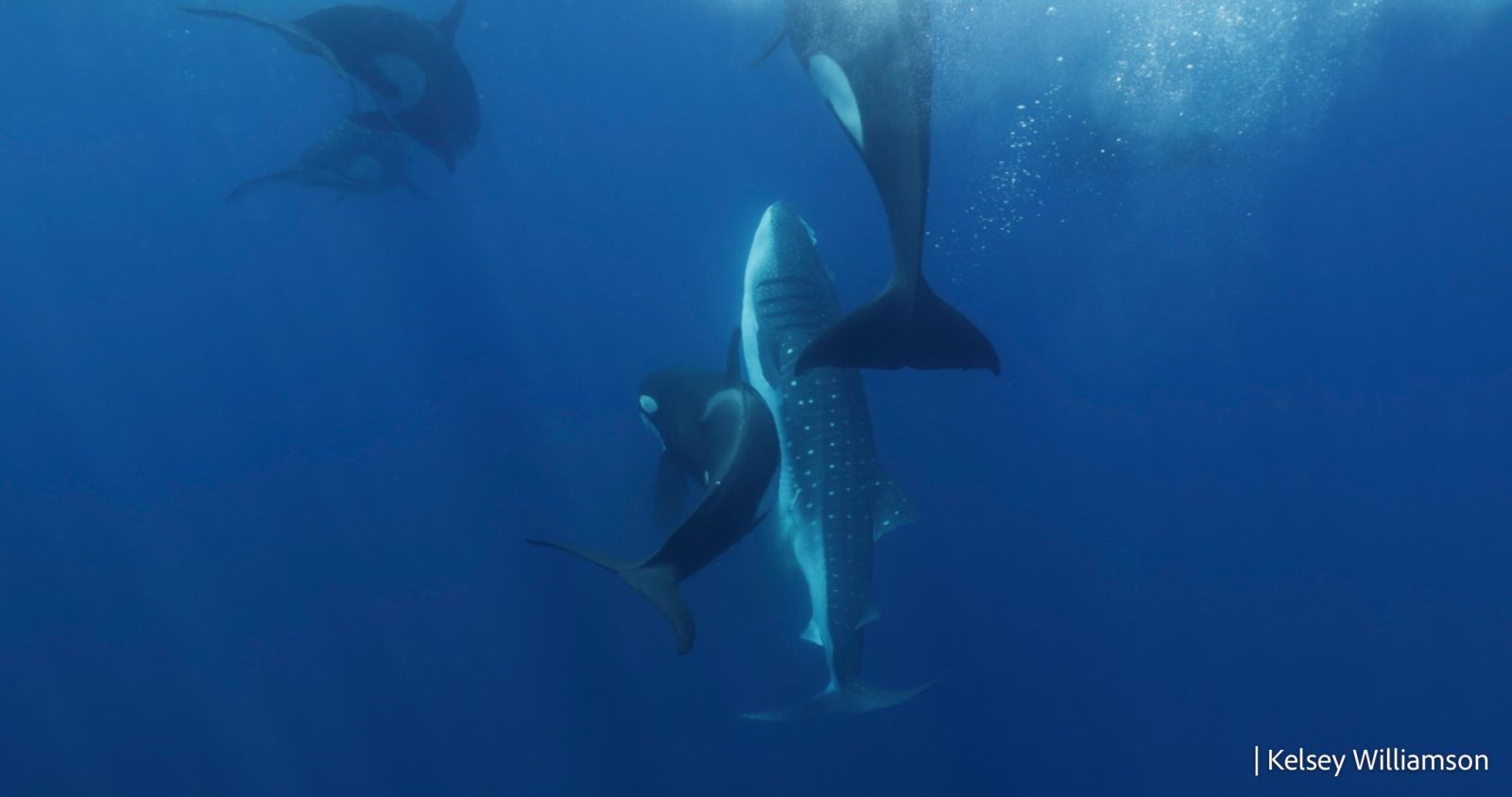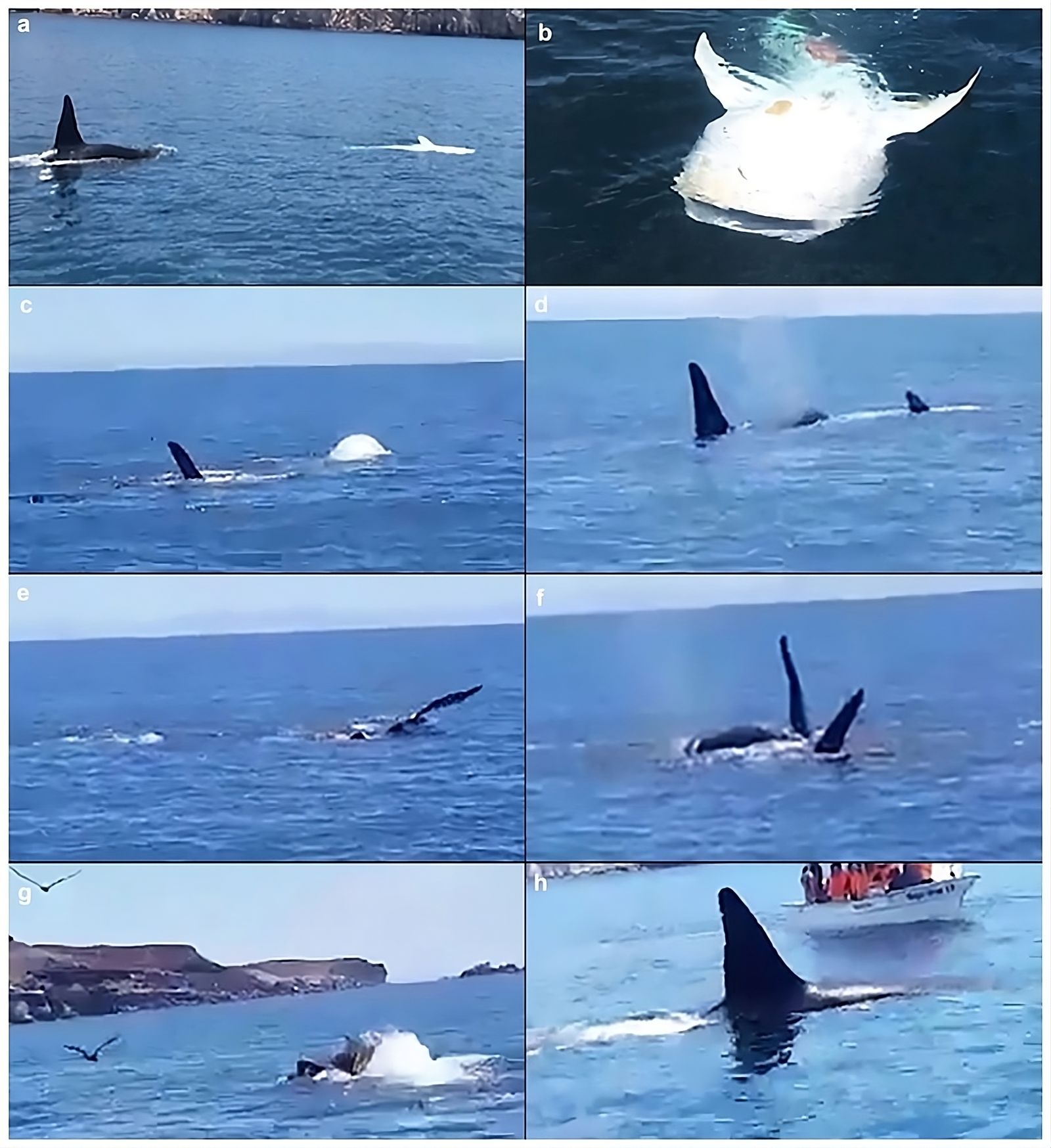These rare scenes of predation reveal the intelligence of orcas 🧠
Follow us on Google News (click on ☆)

a) Orca biting the clasper of the whale shark.
b) Orca biting the pelvic fin of the whale shark.
c, d) "Moctezuma," an adult male from the group, identified among the orcas involved.
For several years, sporadic observations have suggested interactions between these marine predators and whale sharks. With their 59-foot (18-meter) length, these giant fish seem like unlikely prey. However, younger individuals, which are more vulnerable, are strategic targets.
Scientists have recorded four hunting episodes between 2018 and 2024. These scenes, captured in videos and photos, show the orcas working together to disorient their prey. Once flipped onto its back, the whale shark enters a state of tonic immobility. This strategy, exploited by the orcas, allows them to access vulnerable areas of the animal's body.
An adult male named Moctezuma, identifiable by his scars, was observed in three of the attacks. Accompanied by females and younger orcas, he appears to play a central role in transmitting these specialized techniques. This behavior could indicate cultural transmission within this specific population.


Top: The whale shark is brought to the surface, and an orca bites near the pelvic area.
Bottom: The orcas surface to breathe before grabbing the whale shark and delivering a swift, final blow.
Credit: Kelsey Williamson
The orcas specifically target the pelvic area of whale sharks, a less protected part where they can reach nutrient-rich organs like the liver. However, researchers did not directly observe the consumption of this organ during these events.
This new hunting strategy highlights the astonishing intelligence of these marine predators. Still, it raises questions about the survival of these orcas should their prey populations decline. Climate change, by disrupting marine ecosystems, could limit access to whale sharks in the region.
For researchers, these observations also underscore the importance of regulating human activities in these marine areas. Touristic and scientific activities must be managed to protect both prey and predators.

a) "Moctezuma," adult male orca, approaches an apparently dying whale shark.
b) The whale shark shows a large bleeding wound after several impacts.
c) The orca pushes the whale shark below the surface.
d) The whale shark is brought back to the surface, its pectoral fins out of the water.
e) The whale shark's caudal fin strikes the surface.
f) The orca is behind the shark, striking it repeatedly.
g) "Moctezuma" continues to strike the whale shark.
h) Tourist boats observe as "Moctezuma" disappears after the attack.
The collaboration of orcas highlights their key role in marine ecosystems. These behaviors illustrate their capacity to adapt to their environment.